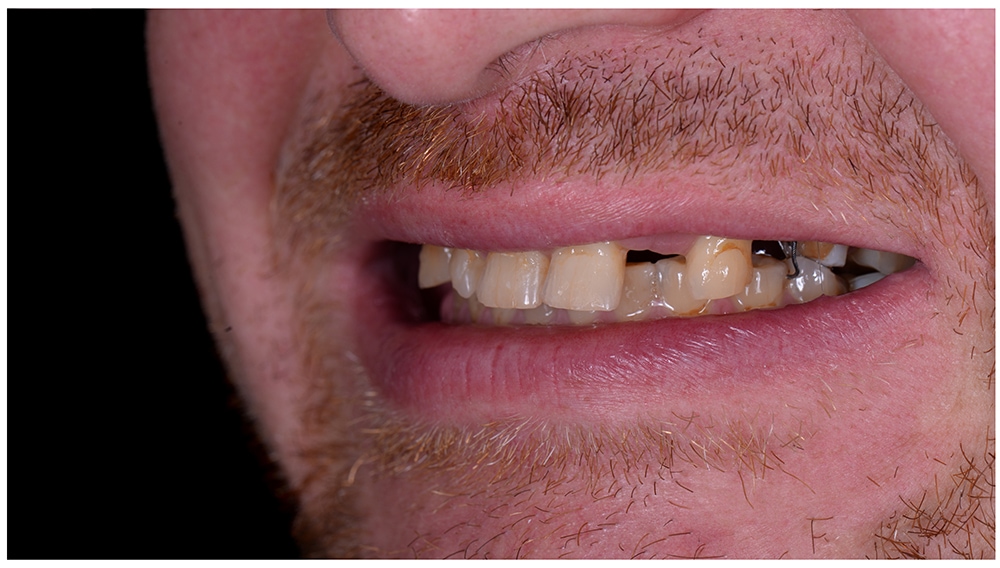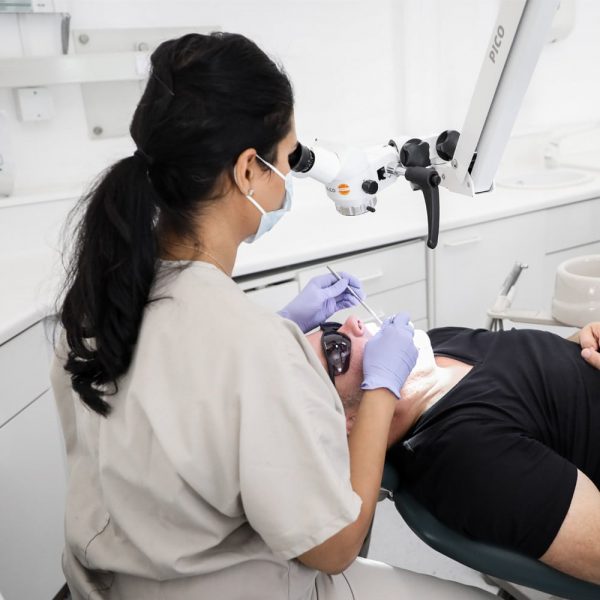When primary root canal treatment fails, root canal retreatment can be an essential dental procedure if the tooth is to be saved.
The subsequent paragraphs will endeavour to unmask the multiple facets of endodontic retreatment, providing you with the knowledge required for an informed discussion with your dental healthcare professional.
Why do I need an Endodontic Retreatment.
Endodontic retreatment is a necessary dental procedure when the primary endodontic treatment fails for various reasons. Common signs of failure include: pain, swelling around the tooth, increasing periapical periodontitis (noticed on x-ray) and tenderness to bite. The common reasons for failure of the primary treatment include: inadequate chemomechanical debridement of the root canal (because it was too complex), missed root canal (because of the complicated root canal system), fractured root and poor quality primary root canal filling.
In such cases, non-surgical endodontic retreatment is often the preferred approach, which involves:
- Identifying the correct cause of failure.
- Cleaning and disinfecting the root canal system (over 2 visits).
- Properly sealing the root canal system.
- Providing an optimal coronal seal.
In these cases we would strongly recommend that they are exclusively carried out by specialist endodontists.
While all endodontists are dentists, less than three percent of dentists are endodontists.
What Happens During Endodontic Retreatment.
Endodontic retreatment is typically performed over two visits. The first step involves the removal of the root canal filling materials. The tooth is then meticulously examined for any new infections, fractures, blockages or additional canals and is very similar to primary endodontic treatment.
Infections, if any, are removed, and the canals are cleaned and shaped. After the cleaning process, new root canal filling materials are placed and the tooth is temporarily filled. This is done to prevent any new infections from entering the tooth while it heals.
| Steps | Description |
| Anaesthesia | Local anaesthesia is administered to ensure a painless procedure |
| Infection Removal | Infections are removed, and the canals are cleaned and shaped |
| New Filling | New restorative materials are placed, and the tooth is temporarily filled |
| Restoration | Once healed, a new crown or restoration is placed on the tooth |
Endodontic retreatment concludes with the placement of a new restorative material (crown) to protect the tooth. Regular follow-up visits are necessary to monitor the healing process and ensure the long-term success of the retreatment.
Is Endodontic Retreatment The Best Thing For Me?
Endodontic retreatment might be the best thing for you if you want to preserve your natural tooth and avoid extraction. With the aid of modern dental equipment and techniques and a highly trained specialist endodontist, retreatment can effectively resolve the issue causing the initial treatment's failure.
Retreated teeth can function well for years, even for a lifetime. The success rate of endodontic retreatment is high, and it's important to note that your endodontist will discuss the probability of success before commencing the procedure. The use of advanced technology, such as antibacterial paste, can reduce bacterial growth and improve healing chances, contributing to the long-term success of the procedure.
However, retreatment is typically more expensive than the initial treatment, with costs varying based on the complexity of the procedure. Despite the cost, the potential to save your natural tooth and maintain its functionality over time might make endodontic retreatment the best thing for you.
What Are The Alternatives to Endodontic Retreatment?
Several alternatives can be considered when endodontic retreatment is not feasible or desired. They include periradicular surgery OR extraction of the tooth and replacement. The choice will depend on the patient's unique circumstances and overall oral health.
Periradicular surgery is a viable alternative to endodontic retreatment. This surgical procedure allows endodontists to locate small fractures or hidden canals that weren't detected during initial treatments.
Alternatively, the patient may opt for tooth extraction. This procedure is often followed by replacing the extracted tooth with an implant, bridge, or removable partial denture.
However, it's important to note that these alternatives to retreatment can be more costly and time-consuming than endodontic retreatment itself. Therefore, the decision should be made in consultation with a dental professional.
| Alternative | Description | Considerations |
| Periradicular Surgery | Locates small fractures or hidden canals. | Can be more invasive than retreatment. |
| Tooth Extraction | Complete removal of the tooth. | Costly; requires tooth replacement. |
| Implants, Bridges, or Dentures | Replace the extracted tooth. | Time-consuming and expensive. |

















